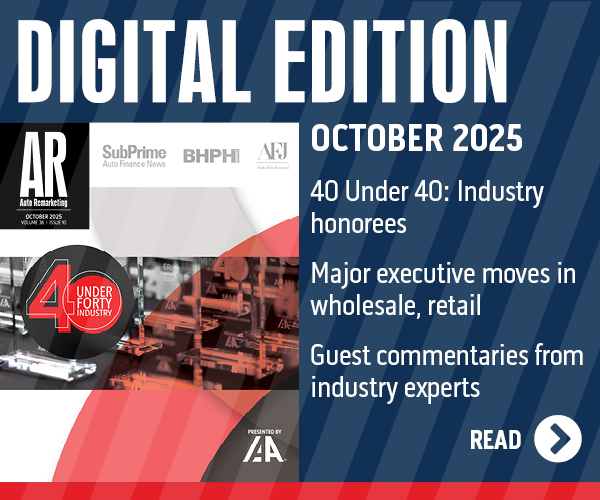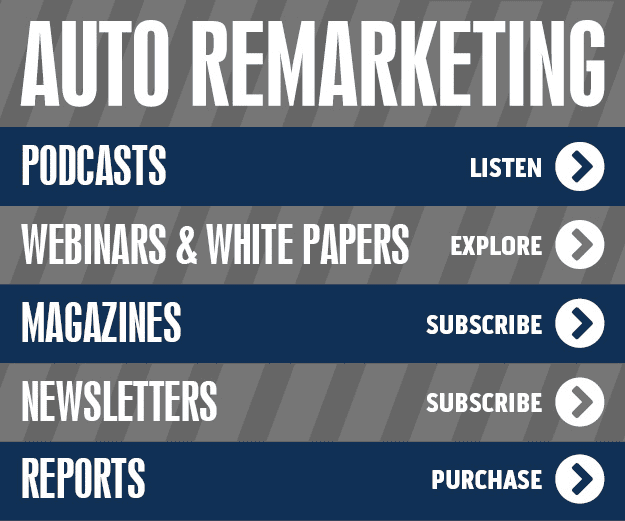Increasing Detail Employee Productivity
There are many ways an auto dealer can increase employee productivity, including training, better equipment, proper use of the employee's talents and a lot of positive feedback.
Unfortunately, few dealerships operate an efficient or productive detail department. But if they expect things to get better, they have to be willing to change.
To have a productive department, you must pay more attention to the type of employee you hire, the kind of training they receive and the kind of reviews they receive.
You can achieve an efficient department by applying 10 ideas that add up to what could be called a “total program” for productivity. And the best thing is that all of these ideas are very affordable and cost-effective, in fact some can be implemented with no cost at all.
1. Communication: Increasing the shop's productivity begins by talking less and listening more.
Every successful dealer knows, or should know, how important communication is to employee productivity. You must listen to employees. “It is not the tail wagging the dog;” it is nothing more than valuable interchange between you and employees. When was the last time you spoke to your detail employees? Or the person in charge of the recon department had a meeting with the entire staff?
If the detailers do not know what is expected, how can they be productive? What is needed are meetings — every morning, in fact — to keep everyone in touch with what is happening and what is expected for the day.
Obviously, the dealer principal or GM cannot do that, but a competent shop manager (by shop manager, we mean manager, not a detailer) can. And that shop manager should be reviewed by his superior once or twice a week at a minimum.
One example of communication put to good use occurred in a shop where the detailers suggested a vinyl curtain be placed between the wash bay and the detail bays. The curtain kept the water overspray off the vehicles in the detail work bays and off the other detailers. The suggestion resulted in increased productivity and a cleaner shop.
2. Employee Participation: This is essential. A problem cannot be acted upon unless someone in power knows it exists.
A dealer should be receptive to employee feedback. Since you do not work in or around the detail shop, it is critical that you listen to what the detailers have to say, and to their ideas. You must want your employees to talk. This shows they care about the work they do and about the dealership. If they have an idea that will work, try it. Wait a few days; you will know if it works. If it does not, go back to the old way.
No dealer wants a “dead horse” in their dealership, but detailers will not present ideas if they are always slapped down.
3. Measuring Productivity: Learn what employees do best, and place them where they are the most effective.
Once there are communications lines open with detail employees, the first step to take is to measure detail shop productivity. If you want to increase productivity, you have to know what it is now. Watch shop production for a few weeks. If a production does “give” with paid labor, then you have something tangible to correct.
4. Proper Compensation Programs: Use the most effective compensation plan for your shop.
When and how employees are paid is a huge factor that affects employee productivity. You may want to track productivity based on the present pay plan, then institute another plan or variation of the current plan and measure the results. Is there an increase or a decrease?
You may be paying by the vehicle or job and decide to charge to by the hour, or vice versa. It will be quite easy to measure the results.
An interesting fact that one dealer presented to me was that he found that the last 25- to 30- percent of the pay period was the most productive, regardless of what day of the week it is. By shortening the pay cycle, you might have productivity over the entire pay period.
5. Incentives: Learn what motivates your employees, and use that knowledge to your best advantage.
Incentives never hurt production; that is a given. Incentives can be based on how much work they get done beyond the standard. For example, if you expect the equivalent of two complete details per man per eight-hour shift, and they get two-and-a-half or three completed, you can provide an incentive for that. Or, you can have team bonuses. Apply the same principal above to the entire team for the day.
6. Benefits: This goes hand-in-hand with incentives; the more you have to work for the harder you will work.
An employee who receives health insurance, profit sharing, retirement benefits, paid vacation or paid sick days, will be more likely to consider their job an investment. Employees with an investment in a business will, in turn, be more productive.
7. Training: Every bit of training improves productivity. Training is never wasted — if you have employees who want to learn.
Every successful dealer will tell you that in addition to communication and monitoring of workflow, training ranks as one of the most effective ways to increase employee productivity.
Training is a big part of productivity. Things change so fast that training is a must. Detailers have to be trained in today's high-tech paint finishes, and what they can and cannot do to them. They need to understand the different types of leathers and how to clean each. They must know what they are doing if they are going to be productive.
Keeping up with the innovations and techniques in the detail industry will result in savings of up to one hour per car. For example, there are hand held orbital waxers that will allow a detailer to wax an entire vehicle in five minutes versus the 20 30 minutes by hand. There are also rotary shampooers that will allow the detailer to friction shampoo the entire carpet and upholstery area better and with less fatigue, in about 10 minutes.
8. State of the Art Equipment: Productivity depends on how efficient the equipment is that is
being used.
You must have equipment in your shop that will allow the detailing job to be completed as efficiently as possible — this means with very little wasted motion, which translates into time. The right equipment for the job has to be there for productivity, and the employees must be trained in its use. You should have a plan to purchase as much new equipment as possible. To get the employees trained on it, demand on-site training from the supplier to insure that all employees are trained in their environment. Training at a school is great, but at a school, you have no pressure, everything is clean and spotless. You need on-sight training.
9. Work Flow: A detail job should move smoothly through the shop, cutting down on employee and vehicle movement.
The layout of the shop and the positioning of equipment should be done in the most effective way to optimize workflow. This translates into greater productivity. Do not look only at the labor-saving features of the equipment, but how it will fit into the shop layout. For example, a multi-bay detail shop should really have a central vacuum with hose drops in each detail bay, or the wash bay should be equipped with a remote-mounted pressure washer and a hose boom mounted to the ceiling.
Chemicals should be dispensed from some type of central dispensing system delivering the chemicals to the work bays via lines, not bottles. This eliminates all those inefficient plastic squeeze and spray bottles. You cannot have proper workflow with inefficient technology.
10. Morale: A disheartened worker is not an efficient worker.
You must provide feedback to your detail employees if you want them to be productive and have high morale in your shop. When you recognize employees and their performance it means a lot to them. Little things are important and do affect productivity. Bringing in lunch once a week, or better yet taking the entire staff out for lunch, or closing down early on a slow day, can be effective in developing employee morale.
Remember all you may need is just a 10 or 15 percent increase in productivity to be profitable or more profitable.


